Half-Marathon - You Can Do It
Jeff Galloway
Half-Marathon
You can do it
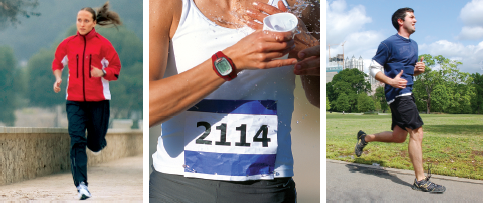
Meyer & Meyer Sport
British Library Cataloguing in Publication Data
A catalogue record for this book is available from the British Library
Half-Marathon You Can Do It
Maidenhead: Meyer & Meyer Sport (UK) Ltd., 2011
ISBN 978-1-84126-744-9
All rights reserved, especially the right to copy and distribute, including the translation rights. No part of this work may be reproducedincluding by photocopy, microfilm or any other meansprocessed, stored electronically, copied or distributed in any form whatsoever without the written permission of the publisher.
2006 by Meyer & Meyer Sport (UK) Ltd.
4th Edition, 2011
Auckland, Beirut, Budapest, Cairo, Cape Town, Dubai, Indianapolis,
Kindberg, Maidenhead, Sydney, Olten, Singapore, Tehran, Toronto
Member of the World
 Sport Publishers Association (WSPA)
Sport Publishers Association (WSPA)
www.w-s-p-a.org
Printed by: B.O.S.S Druck und Medien GmbH, Germany
Also available in print.
Print-ISBN 978-1-84126-333-5
E-Mail:
www.m-m-sports.com

Photo & Illustration Credits
| Cover Photo: | imago sportfotodienst GmbH |
| Jacket Photo: | Thinkstock/Ablestock.com |
| Cover Design: | Sabine Groten |
| Inside Photos: | Polar Electro |
| Andy Sharp |
| Bakke Svenson/WTC |
| Brennan Galloway |
| Westin Galloway |
| Gregory Sheats |

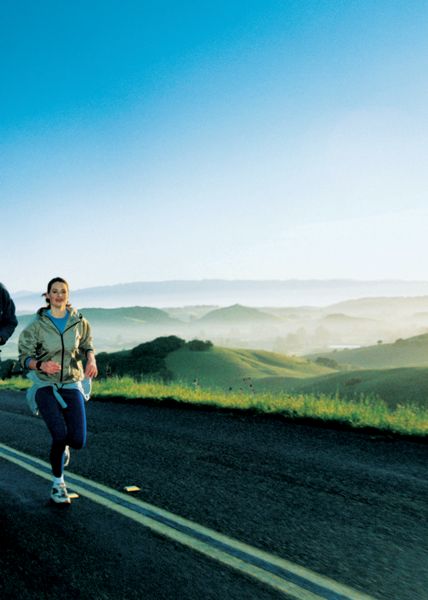
Why Has the Half-Marathon Become so Popular?
Why has the Half-Marathon become so popular?
| Even after a difficult 13.1 mile (21K) race, runners can usually celebrate that evening; |
| Beginners who yearn to run a marathon see this distance as the first big step; |
| Marathoners find that the half keeps them in shape for their next full; |
| The distance is enough of a challenge to keep runners focused and energized; |
| Increasing long runs towards a Half-Marathon race results in faster times at 5K, 10K, etc. |
A fter studying findings of experts who specialize in ancient man, Ive come to believe that training for long distance events connects us directly to our roots. Primitive man had to walk and run for survivalthousands of miles a year. Through millions of years of evolution, the muscles, tendons, bones, energy systems and cardiovascular capacity adapted and expanded. A series of psychological rewards also developed, which make us feel good about ourselves when we run and walk at the correct pace in a consistent training program.
The primary goal of ancient migration was to reach the next destination. Likewise, the greatest joy for Half-Marathoners comes in crossing the finish line. The perception among those whove run both marathons and Half-Marathons is that running the half bestows more than half of the satisfaction and achievement of the full.
There are quite a few lessons to be learned as one extends ones endurance limit beyond 13 miles or 21K: conservation of resources, pacing, fluid intake, blood sugar maintenance, etc. But making a mistake during half training does not incur the injury risk or the down time experienced after marathon errors.
Veterans whove run the distance before will find in this book a series of highly successful training programs, based upon the time goal. Youll be introduced to other training components that will make the journey more interesting. Be careful if youre a veteran doing speed workouts: most of the injuries occur here. It is always best to be conservative.
If you find a way to enjoy a part of every run, your Half-Marathon training can bring joy, satisfaction, achievement, and a positive sense of focus. For many, the challenge teaches individuals that they have unused hidden resources that can be used to deal with other challenges in life. Much of the success and joy comes from a unique endurance blending of body, mind and spirit.
Above all, you will find tools inside this book to take control over your fitness, your attitude, your endurance, your fatigue, your aches/pains, and your vitality. When you use these tools, you become the captain of an injury-free ship and can steer toward a number of positive experiences.
This book is written as one runner to another and is the result of about 50 years of running, over 4 decades of training for half and full marathons, and from having been the coach to more than 500,000 runners through my e-coaching, running schools, retreats, books, and individual consultations. None of the advice inside is offered as medical advice. To get help in this area, see a doctor or appropriate medical expert.
I salute all who put themselves to a realistic challenge. If you havent done this before, you have one of lifes great rewards waiting for you as you discover that you have much more strength inside than you envisioned.
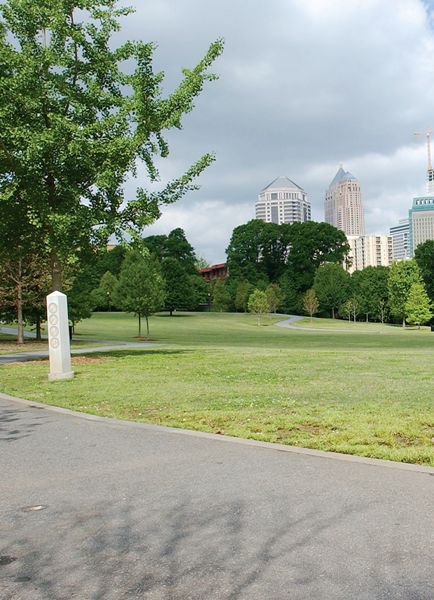

Setting Goals and Priorities
B y focusing on a few key elements, you have the opportunity to take control over the enjoyment of the running experience. If youre preparing for your first 21K race, I recommend that you choose the to finish schedule, and run slower on every run than you could run on that day. Even after the 20th or 100th race, youre more likely to remember the details of your first one. Your mission, therefore, should be to weave the training runs, and the race itself, into a positive tapestry of memories that will enrich the rest of your life.
Top three goals:
1) | Finish in the upright position, |
2) | with a smile on your face, |
3) | wanting to do it again. |
These three components define the first level of success in any training program, and the degree of enjoyment of each long run. If this is your first race experience at the 13.1 distance, visualize yourself coming across the finish line, demonstrating these three behaviors. The more you focus on this image, the more likely you are to realize this during most of your runs.
Running enjoyment
Find a way to enjoy parts of every runeven the speed training (if you are a time goal runner). Most of your runs should be....mostly enjoyable. You increase the pleasure of each run by inserting a few social/scenic/mentally refreshing runs every week. Your desire to take your next run, and move up your training to the Half-Marathon and beyond, is enhanced by scheduling the fun sessions first, with 1-3 of them every week.
Next page
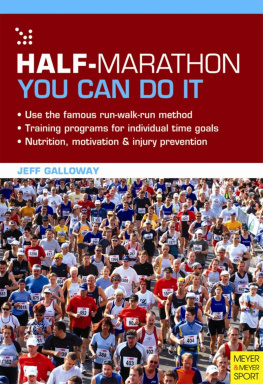
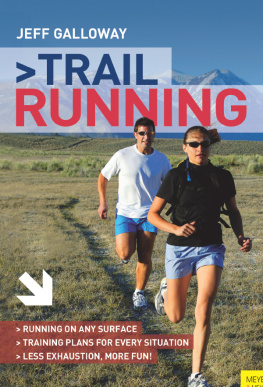
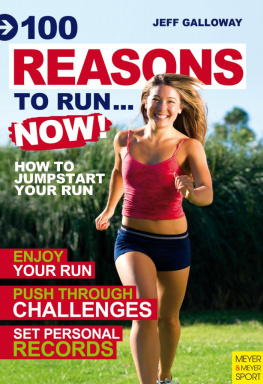
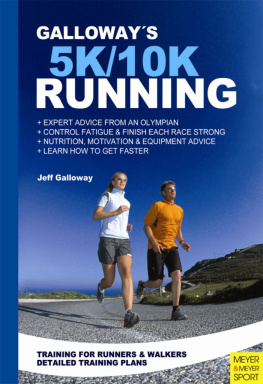

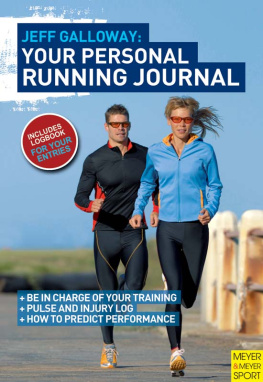
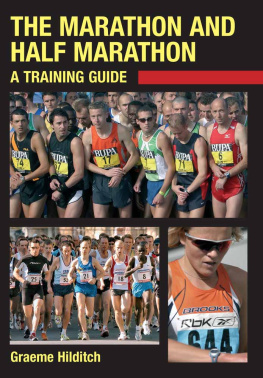

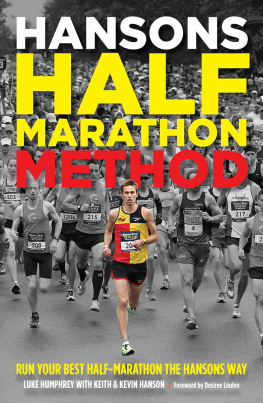

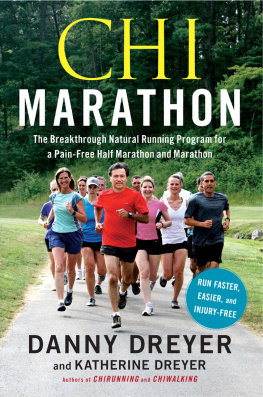

 Sport Publishers Association (WSPA)
Sport Publishers Association (WSPA)



